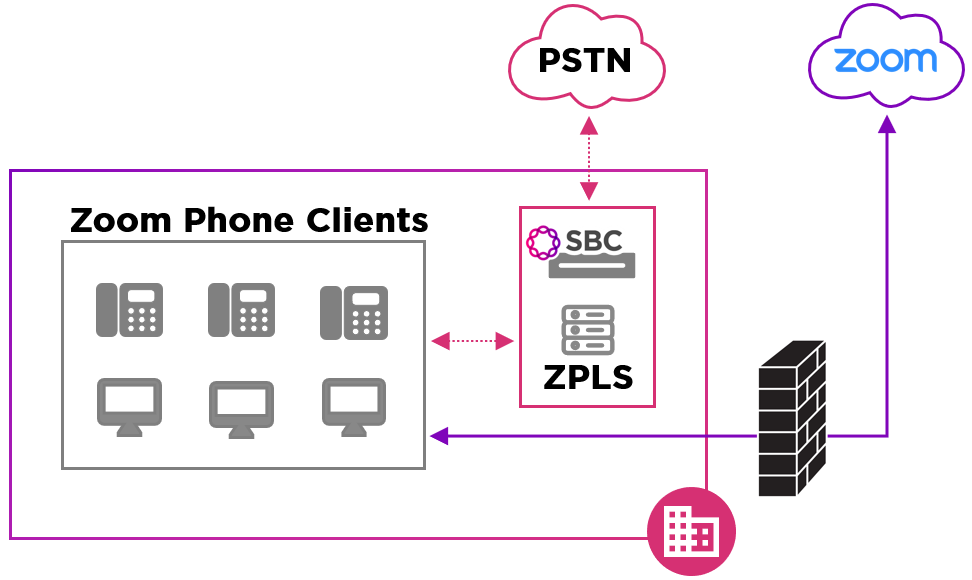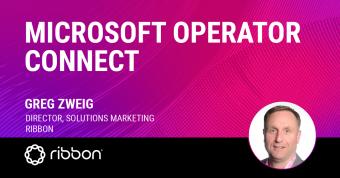Zoom Phone Delivers Local Survivability with Ribbon SBCs
With more than 4 million seats sold, Zoom Phone has experienced spectacular growth. Employees have embraced the Zoom Rooms experience and many enterprises are eager to extend their Zoom use to include the office phone system.
Migrating to a cloud-based phone system is compelling because it eliminates the costs and time associated with deploying and managing legacy phone systems/PBX hardware and proprietary business phones. However, moving 100% of an organization’s communications infrastructure off-site can present new challenges. If connectivity to the cloud is lost, a site could lose both external communications and intra-site communications. For schools, hospitals, governments, or similar mission-critical environments, that disruption is unacceptable.
Of course, some readers are already thinking to themselves “no worries, we still have mobile phones.” Indeed, that may seem like a reasonable option for making a 911/999 call or reaching a customer, but it would be a mistake to assume that it works for every environment. After all, how many of us have all of our co-workers’ mobile numbers in our phone contacts? Does a schoolteacher have the mobile phone number of the safety officer on duty? In a large location like a hospital, does the nurse on the 2nd floor even know who is working in the X-ray dept today or who the trauma surgeon on duty is? How do employees use a mobile phone to effectively communicate in those settings? In these and many other organizations, a mobile phone is simply not a practical replacement for a working phone system and forwarding calls to cell phones or using the Zoom mobile app is not a solution for business continuity.
That’s why Zoom developed Zoom Phone Local Survivability (ZPLS) software. Basically, it’s a simple version of Zoom Phone call control that runs on-site (or in a local data center) and can take over if the Zoom Phone cloud is unavailable. It operates on a virtual machine, so it’s easy to deploy on a variety of computer platforms.
Zoom Phone’s local survivability strategy might appear similar to its largest competitor’s offering, but it’s actually quite different. ZPLS offers robust capabilities in survivability mode, including directory-based calling and group features like conference call and call park. This makes ZPLS a practical solution for extended use in the event disaster strikes. Its thoughtful design should enable many more organizations to move all their communications to the cloud.

How Zoom Phone with ZPLS Helps Prevent Outages
Once deployed, and in the event of a network connectivity problem, Zoom Phone users can maintain access to the Zoom directory for internal calls, and the ZPLS software works in concert with a Ribbon SBC to route external calls out to the PSTN – either via a local SIP trunk or a local PRI/analog line. Conversely, the Ribbon SBC will route any incoming calls to the ZPLS. The ZPLS solution works with Zoom clients and ZPLS enabled devices (phones or other devices that have configuration parameters for ZPLS).
During normal operations, the ZPLS software sits idle. If the Zoom Phone cloud becomes unreachable (Internet outage, Zoom outage, etc.), Zoom Phone clients and ZPLS-enabled devices enter survivability mode, registering to the local module. The ZPLS software can stay in survivability mode for up to 30 days, during which directory-based calling, transfer, ad-hoc conferencing, and other key phone service capabilities are maintained. When normal services are restored, the clients and devices automatically re-register back to the Zoom Phone cloud.
Since it runs in a virtual machine environment, ZPLS can be associated with a variety of Ribbon SBC platforms. The companies worked together to test ZPLS software with multiple Ribbon hardware and software SBC models, and confirmed that it works with Ribbon’s SBC SWe, SBC 5400, SBC SWe Edge (formerly SBC SWE Lite), SBC 2000,and SBC 1000. While there are no specific deployment requirements for the Ribbon SBC, Ribbon’s testing with ZPLS was completed using the most recent SBC software release for each product. Zoom Phone already uses Ribbon SBCs in the core of its network, so our joint testing focused on ensuring that the combined solution is well understood and documented in a Config Guide. No additional licenses are required on Ribbon SBCs to deploy ZPLS.
Organizations that haven’t yet made the transition to a cloud-based phone system now have an additional option which may just be the one that fits their needs.
Learn more about Ribbon’s solutions for Zoom Phone and about Zoom ZPLS.





